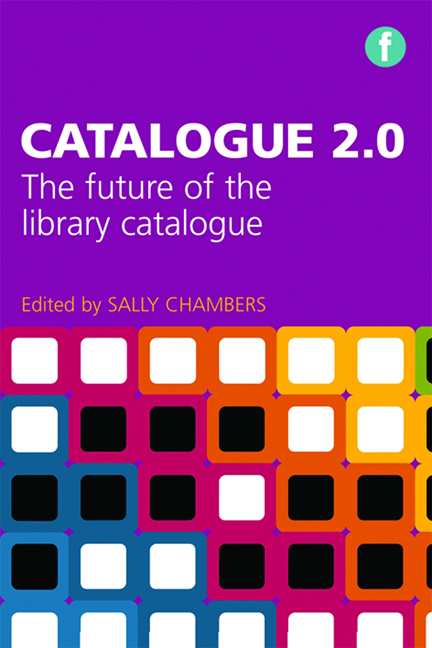Book contents
- Frontmatter
- Dedication
- Contents
- Acknowledgements
- Foreword
- Introduction
- Editor and contributor
- 1 Next-generation catalogues: what do users think?
- 2 Making search work for the library user
- 3 Next-generation discovery: an overview of the European scene
- 4 The mobile library catalogue
- 5 FRBRizing your catalogue: the facets of FRBR
- 6 Enabling your catalogue for the Semantic Web
- 7 Supporting digital scholarship: bibliographic control, library co-operatives and open access repositories
- 8 Thirteen ways of looking at libraries, discovery and the catalogue: scale, workflow, attention
- Index
2 - Making search work for the library user
Published online by Cambridge University Press: 08 June 2018
- Frontmatter
- Dedication
- Contents
- Acknowledgements
- Foreword
- Introduction
- Editor and contributor
- 1 Next-generation catalogues: what do users think?
- 2 Making search work for the library user
- 3 Next-generation discovery: an overview of the European scene
- 4 The mobile library catalogue
- 5 FRBRizing your catalogue: the facets of FRBR
- 6 Enabling your catalogue for the Semantic Web
- 7 Supporting digital scholarship: bibliographic control, library co-operatives and open access repositories
- 8 Thirteen ways of looking at libraries, discovery and the catalogue: scale, workflow, attention
- Index
Summary
Introduction
With the advent of the world wide web, using search engines to find information has become a daily activity for many people. Before the web, searching in electronic databases was a complex process, usually carried out by information professionals. As search engines have become more popular, users’ expectations of search interfaces have increased. Users now demand selfservice from intuitively usable search engines that deliver the right results, quickly. Just as users expect this from search engines, they also expect it from library catalogues.
The foundations of both search engines and library catalogues lie in the science of information retrieval. Whereas search engines harness a range of modern information retrieval techniques to provide relevant results for their users, library catalogues are lagging somewhat behind. This chapter will start by describing how Boolean search, using operators such as ‘AND’, ‘OR’ and ‘NOT’ to combine search terms, which is the key information retrieval paradigm used in library catalogues, differs from the Vector Space Model that is used in many search engines. The chapter will then go on to explore how such search engine technologies can be applied to library catalogues and, indeed, if combined with Booleanbased search techniques can lead to a powerful and usable search experience for the library users. Finally, other features of modern search engines, such as search suggestions and facets, are also explored. If all of these technologies can be combined and implemented within a library context, it can help the library catalogue get a step closer to meeting the expectations of today's websavvy users.
A short history of electronic library catalogues
Library catalogues are information retrieval systems.
Information retrieval (IR) deals with the representation, storage, organization of, and access to information items such as documents, Web pages, online catalogs, structured and semistructured records, multimedia objects. The representation and organization of the information items should be such as to provide the users with easy access to information of their interest.
(BeazaYates and RibeiroNeto, 2010, 1)Library card catalogues were designed to help users find information items in libraries. This is still the primary task of library catalogues today.
- Type
- Chapter
- Information
- Catalogue 2.0The future of the library catalogue, pp. 17 - 36Publisher: FacetPrint publication year: 2013



